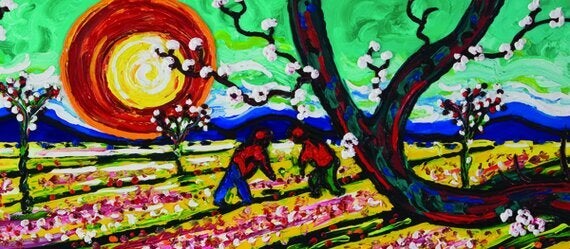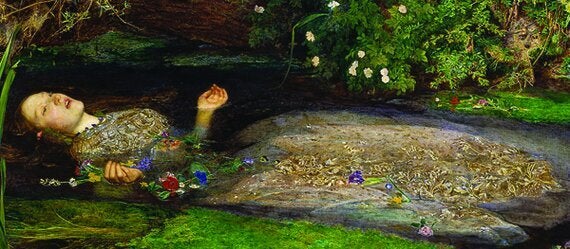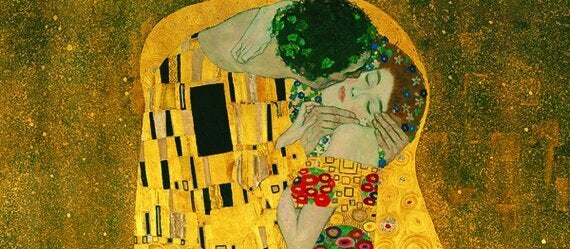I express my emotions in flowers - roses for love, gardenias for fragility, snowdrops for courage, and cherry blossoms for the transience of life.
Among nature's countless gifts are flowers: in the simple grace of their petals, countless souls have been moved to create. But flowers speak of far more than mere beauty. As the art of ages keenly illustrates, the universal language of flowers has long been used to communicate deeper messages, instantly and wordlessly.

Detail from Ana Tzarev's Saffron Pickers.
Van Gogh, Monet, and O'Keeffe placed flowers at the forefront, exploring their curves and hues through their own unique styles. The Dutch masters crafted incredible still-life scenes, with blossoms so stark and expressive that they seem to reach beyond the canvas. However, many of art history's finest works show flowers playing a smaller role, hinting at a scene's meaning in subtle yet significant ways.
Take, for instance, Sir John Everett Millais' portrait of Ophelia from one of the Hamlet's most tragic moments. The young woman is seen floating in a river, moments away from sinking into darkness and death. As described in the scene, a spray of flowers surrounds Ophelia; shortly before her demise, she hands blossoms out to other characters and describes their symbolic weight.

Detail from Millais' Ophelia.
This use of symbolism is mirrored in Millais' representation of the scene. In addition to the flowers mentioned as part of her garland in the play, she clutches a poppy - commonly used to represent sleep and death. The dim and drab of her clothing speaks of the cessation of life while the petals and greenery surrounding her repose remind viewers of its continuation.
The inclusion of flowers as messengers of meaning adds such dimensionality to a masterwork! Gustav Klimt's The Kiss depicts two lovers, a man and woman - the former cloaked in sharp, heavy boxes, the latter draped in a cascade of petals. With one small detail, the artist accentuates the character of the sexes.

The contrast of harsh and soft patterning in the figures suggests the interplay of the sexes in Gustav Klimt's The Kiss.
In The Garden of Earthly Delights, Hieronymus Bosch parallels the innocence and freedom of Paradise against Hell's dismal suffering through the vibrant lushness of vegetation. The stark eroticism of Titian's Venus of Urbino is balanced by the figure's handful of roses, a soft suggestion of traditional romance.
In possessing an awareness of the deeper meaning flowers grant to art, the observer's experience with a piece is greatly enriched. Beyond the technical prowess and aesthetic glory at play on canvas, a story is being told.
